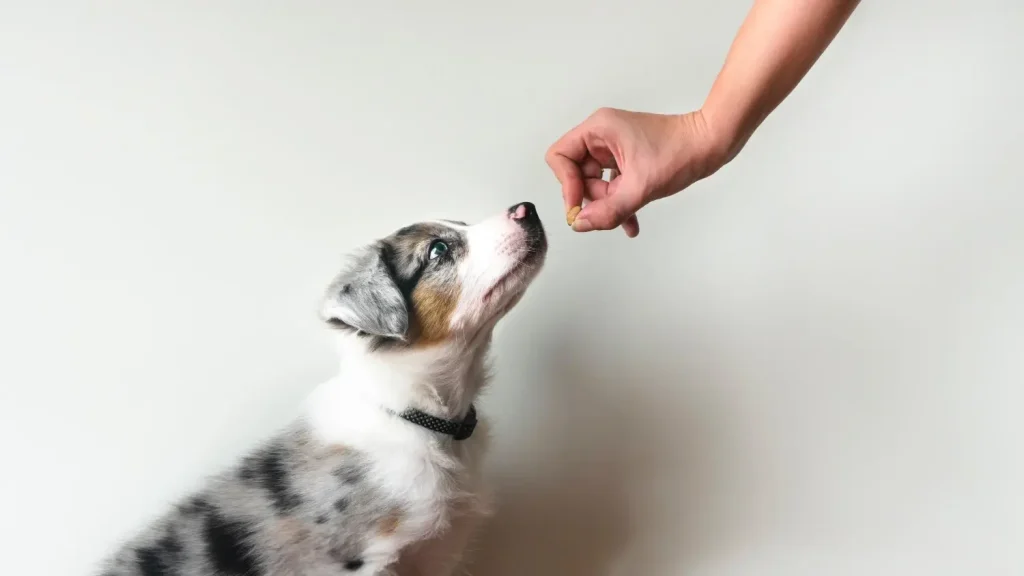Positive Reinforcement Methods for Dog Training: The Key to an Obedient Companion

Understanding Positive Reinforcement in Dog Training
Imagine welcoming your dog into your home, enthusiastic and eager to please you. This dream can become a reality through positive reinforcement methods, an innovative approach to dog training that emphasizes the value of rewarding good behavior rather than resorting to punishment. Engaging your dog through this method strengthens not only obedience but also the bond that you share.
At its core, positive reinforcement involves identifying desirable behaviors and rewarding them to encourage their repetition. For instance, consider the practice of offering treats—small, flavored snacks that make your dog excited about learning. When your dog sits on command and receives a treat, it associates sitting with positive outcomes, leading to a higher likelihood of obeying in the future.
Similarly, praise can significantly motivate your pet. A simple “Good boy!” or “Well done!” delivered with enthusiasm can boost your dog’s confidence and encourage continued good behavior. Some may argue that dogs crave attention and affection more than food; therefore, acknowledging their achievements through verbal affirmations can foster a loving dynamic.
Another aspect of positive reinforcement is playtime. Engaging your dog in a game of fetch or tug-of-war after they have followed a command reinforces the joy associated with listening to you. This approach creates a balanced mix of mental and physical stimulation, crucial for a dog’s development and overall happiness.
In Nigeria, a country with a growing community of dog lovers, the approach to dog training is evolving. Many owners are turning away from traditional methods that can instill fear and instead are embracing more humane techniques that respect the emotional well-being of dogs. Research indicates that dogs trained with positive reinforcement not only retain commands better, but they also display reduced behavioral issues, fostering a more serene environment at home.

Understanding these effective strategies is vital if you seek to enhance your dog’s behavior and promote a harmonious household. The power of positive reinforcement lies in its ability to build trust, reduce anxiety, and create a positive learning atmosphere for your furry friend. As you delve deeper, you will uncover the fascinating science behind these methods and practical ways to integrate them into your daily routine, enriching both your life and your dog’s.
LEARN MORE: This related article may interest you
The Science Behind Positive Reinforcement
To fully appreciate the effectiveness of positive reinforcement methods in dog training, it is essential to understand the psychological principles at work. At its foundation is the concept of operant conditioning, a learning process whereby a behavior is strengthened or weakened depending on the consequences that follow it. When a dog performs a desired action and is rewarded, the likelihood of that behavior being repeated increases significantly.
Research consistently shows that dogs trained using positive reinforcement exhibit remarkable improvements in obedience, adaptability, and overall demeanor. For instance, according to a study published in the Journal of Veterinary Behavior, dogs trained through positive methods not only retained commands better but also displayed lower levels of stress and anxiety. This is especially pertinent in a bustling environment like Nigeria, where dogs are often exposed to various stimuli, from the hustle of the marketplace to the sounds of busy traffic.
Implementing positive reinforcement can be straightforward, as it revolves around three primary components:
- Timing: The reward must be given immediately after the desired behavior to create a clear connection. For example, if your dog sits on command, offering a treat right away reinforces the action and helps your pet understand what’s being rewarded.
- Consistency: Consistency is key in any training program. Ensure that everyone in your household uses the same commands and rewards. This uniformity aids your dog in understanding what is expected and reduces confusion.
- Variety: Keep your dog engaged by varying the types of rewards—treats, praise, or playtime. This ensures that training remains exciting and your dog is always curious about how to earn their next reward.
In Nigeria, where diverse dog breeds and mixed-breed companions abound, the application of positive reinforcement can be adapted to suit various training needs. Whether a lively Nigerian breed like the Central African Herding Dog or a more common family pet, tailoring your approach can yield significant rewards.
Moreover, outdoor training sessions can reveal insightful moments for utilizing positive reinforcement. Taking your dog to an open field or a garden allows you to practice commands in real-world scenarios, rewarding them when they successfully navigate distractions such as other animals, people, or enticing smells. These experiences facilitate growth in your dog’s confidence and obedience, ultimately leading to a fulfilling companionship.
As you embark on your dog training journey, don’t underestimate the remarkable transformations positive reinforcement can bring. With patience and the right tools, you will witness your dog blossom into a well-behaved and obedient companion, one reward at a time.
Understanding the Science Behind Positive Reinforcement
Positive reinforcement is a powerful tool in dog training that hinges on the principles of behaviorism. When dogs perform a desired behavior and are rewarded with treats, praise, or toys, they are more likely to repeat that behavior in the future. This method is rooted in the concept of operant conditioning, extensively studied by psychologists like B.F. Skinner. Positive reinforcement creates a strong bond between the trainer and the dog, fostering a trusting relationship that is essential for effective communication during training sessions.
Types of Rewards Used in Positive Reinforcement
In positive reinforcement training, rewards can vary widely. Popular options include food treats, which can be particularly effective, especially during initial training stages. However, not all dogs respond the same way to food rewards. Some may find great motivation in verbal praise, while others might be more inclined to perform for their favorite toys or playtime. It’s essential to tailor rewards to individual dog personalities and preferences, ensuring that the training remains engaging for them.
Real-World Applications of Positive Reinforcement
Positive reinforcement methods can be applied in various real-life scenarios. Whether you aim to teach basic obedience commands like “sit,” “stay,” or “come,” or address behavioral issues such as excessive barking or jumping, this method proves to be effective. In group training classes, dogs learn to interact positively with other dogs and people, enhancing their social skills. Moreover, fostering good habits through positive reinforcement not only makes training enjoyable but also leads to a well-behaved pet that integrates seamlessly into family life.
The Lasting Impact on Dog Behavior
Perhaps one of the most significant advantages of positive reinforcement is that it encourages long-term behavioral change. Unlike methods that rely on punishment, which can lead to fear-based responses, training through positive reinforcement promotes a confident and secure dog. This security translates into better overall behavior at home and in public settings, making outings enjoyable for both the dog and the owner. As a result, dogs trained with positive reinforcement often display more enthusiasm and willingness to learn, setting a solid foundation for ongoing training and social interaction.
| Category | Benefits |
|---|---|
| Behavior Learning | Encourages repetition of desired behaviors. |
| Strengthened Bond | Builds trust and communication between dog and owner. |
Continuing to explore the concept of positive reinforcement will lead to a more in-depth understanding of how to foster a happy, obedient companion. Each method discussed not only helps in immediate training success but also ensures that your dog feels secure and motivated to learn.
SEE ALSO: Click here to read another article
Practical Applications of Positive Reinforcement
Moving beyond the theoretical framework, let’s explore the practical applications of positive reinforcement methods for dog training. There’s something truly transformative about rewarding your dog for positive behavior, and with each successful interaction, you deepen the bond between you and your canine companion.
First and foremost, it’s vital to begin with simple commands like “sit” or “stay.” For instance, teaching your dog to sit before mealtime can be a perfect opportunity to harness positive reinforcement. As your dog’s butt touches the ground, deliver a high-value treat immediately, paired with enthusiastic praise. Over time, this simple act can elevate your dog’s excitement for patience and calmness, making meals a trigger for positive behavior rather than chaos.
In a country like Nigeria, where various breeds and sizes of dogs mingle in homes and communities, customizing your training strategies to fit your dog’s unique personality is essential. For example, some dogs may respond more favorably to playtime or affection versus treats. Consider using a favorite toy as a reward. If your dog loves chasing a ball, reward them with a lively game of fetch each time they successfully obey a command. Such tailored approaches not only keep your dog engaged but can also energize the training experience.
Furthermore, incorporating socialization into your training can magnify the benefits of positive reinforcement. Taking your dog to a park where they can meet fellow dogs and people provides an excellent platform for practice. When your dog remains calm and focused in the midst of distractions, rewarding them immediately helps solidify their learning. The social bonds they develop during these interactions are invaluable, leading to a well-adjusted pooch ready to tackle various environments.
One highly effective method to consider is “clicker training.” This technique employs a small device that makes a clicking sound to mark desired behaviors. The clicker serves as a clear, instantaneous indicator that a behavior has earned a reward. Over time, your dog will learn to associate the sound of the clicker with positive reinforcement. In Nigeria, where unreliable sound sources can lead to confusion, the precise nature of clicker training can provide clarity. Using an audible mark that your dog can reliably recognize helps elevate their response levels significantly.
Additionally, integrating challenges can further enrich the training experience. For example, the “leave it” command is particularly important for dogs in urban settings, where they may encounter various potential hazards such as food scraps or hazardous materials on the streets. Training your dog to ignore distractions, followed by a reward for attention on you, can develop focus and impulse control. This not only reinforces their training but also underscores your role as a trusted guardian when navigating exciting yet potentially dangerous situations.
As with all training regimens, patience and persistence play crucial roles. Celebrating small victories, no matter how minor, contributes to the overall long-term success of your training efforts. Keeping a training journal can be beneficial to record your dog’s progress, observe patterns, and refine your methods accordingly.
Incorporating these practical applications of positive reinforcement will aid you in honing your skills as a dog owner and trainer. The journey of transforming your dog into an obedient companion is enriching, filled with interactive learning experiences that solidify both understanding and trust between the two of you.
ADDITIONAL INSIGHTS: Expand your understanding here
Conclusion: The Path to a Harmonious Relationship with Your Dog
In conclusion, the journey to an obedient canine companion is deeply intertwined with the art of positive reinforcement methods. This training approach not only facilitates the learning of commands but also cultivates a fulfilling bond built on trust and mutual respect. The application of strategies such as rewarding with high-value treats, engaging in personalized play, and utilizing clicker training creates an enriching environment that benefits both dog and owner.
As discussed, Nigerian dog owners are uniquely positioned to leverage the diverse behavioral traits of various breeds, tailoring their training techniques to suit individual needs. Whether it’s socializing in local parks or implementing safety commands like “leave it,” the ability to establish clear and engaging rewards will resonate in the quality of your dog’s response. It is essential to remember that engaging interaction, patience, and persistence will yield the best results in training.
Moreover, the long-term success of positive reinforcement is a continuous journey rather than a destination. Celebrating small milestones and documenting your dog’s progress will not only assist in refining your methods but will also highlight the incredible growth you both attain together. By embracing the principles of positive reinforcement, you pave the way for a harmonious relationship where your dog evolves into a well-mannered and content companion, making life more enjoyable and enriching for both of you.
As you embark on this rewarding adventure, remember that every wag of the tail and calm moment is a testament to your efforts. With continued commitment to understanding your dog and utilizing effective positive reinforcement techniques, you are set to unlock the full potential of your furry friend.


